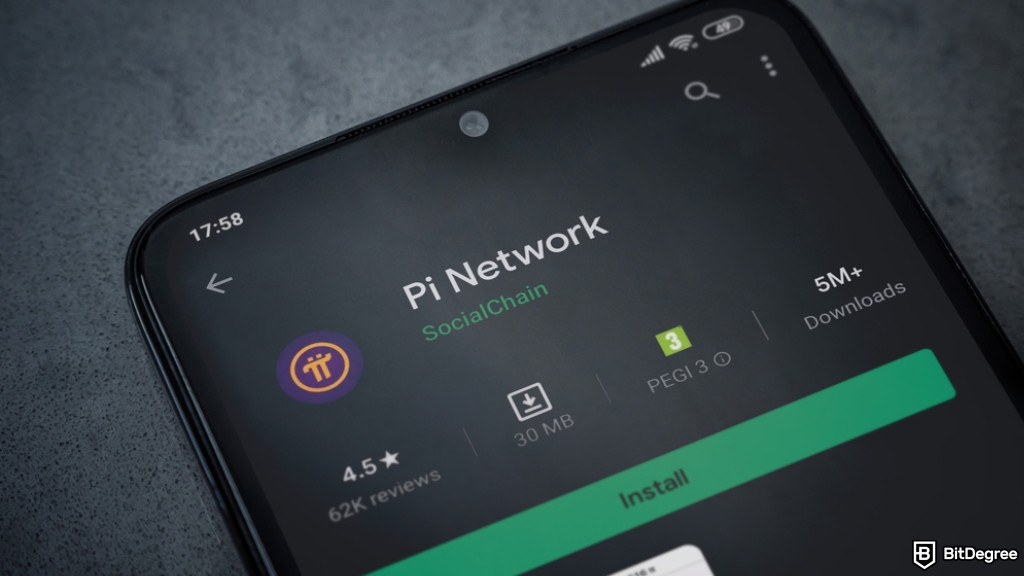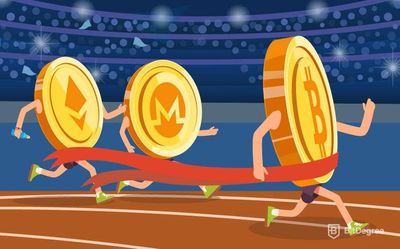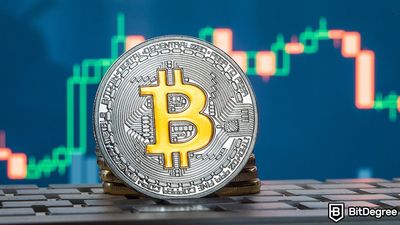Key Takeaways
- Pi Network is a blockchain project designed to make crypto mining accessible through a mobile app, offering a low-energy alternative to traditional mining;
- Mining Pi through the app is as simple as tapping a button to confirm your activity, earning Pi coins as a reward for your participation;
- Despite its large user base and ambitious vision, concerns over delays, data privacy, and its referral-driven growth model continue to raise doubts about the project’s long-term viability.
Free Airdrop Season 7 is LIVE! Answer fun questions or do simple tasks to earn rewards from the $30K BitDegree prize pool. Participate Now ! 🔥
Imagine one day, you catch your grandma fiddling with her smartphone, and when you ask what she’s doing, she replies, “I’m mining cryptocurrency, dear.” Sounds ridiculous, doesn’t it? Yet, that kind of accessibility initially sparked my curiosity and made me wonder what is Pi Network all about.
If the idea of your grandparent mining crypto on her phone seems too far-fetched, it might reflect the kind of simplicity the two Stanford PhDs envisioned when they started the project. Today, Pi Network claims to have a global community with tens of millions of users actively participating, drawn by its innovative concept of user-friendly and low-energy crypto mining.
But, despite years of development and growing hype, Pi has yet to officially launch or secure listings on major exchanges like Binance, Kraken, or Bybit. This uncertainty has left many asking: Is Pi Network legit, or just another crypto scam?

Did you know?
Subscribe - We publish new crypto explainer videos every week!
What is Crypto Arbitrage? (Risks & Tips Explained With Animation)


Table of Contents
- 1. What Is Pi Network?
- 2. How Does Pi Network Mining Work?
- 3. What Is Pi Coin?
- 3.1. Tokenomics
- 3.2. Earning Pi
- 3.3. Use Case
- 4. Is Pi Network Legit? Uncertainty and Concerns
- 4.1. Concern 1: Prolonged Enclosed Mainnet Delay
- 4.2. Concern 2: Pyramid Scheme Allegations
- 4.3. Concern 3: Data Privacy Issues
- 5. Pi Coin Alternatives
- 5.1. Stellar
- 5.2. Bitcoin
- 5.3. Monero
- 6. Conclusions
What Is Pi Network?
To understand what is Pi Network, let’s start with a quick refresher on cryptocurrency mining. In conventional systems, participants validate transactions on a blockchain by solving complex mathematical problems and are rewarded with newly created coins for their efforts.
Latest Deal Active Right Now:Head to BitDegree Missions, gather as many Bits as possible & claim your stake of the $30,000 Prize Pool! Don't waste your time & start collecting Bits by completing Missions and referring friends.
But the process is far from simple. It requires expensive, specialized hardware, consumes vast amounts of energy,[1] and demands technical expertise. As a result, traditional mining is out of reach for the average person.
Dr. Nicolas Kokkalis and Dr. Chengdiao Fan, two Stanford PhDs, recognized these barriers to entry and set out to simplify the process. In 2019, they launched Pi Network—a decentralized blockchain platform that allows anyone to mine crypto tokens using only a smartphone.
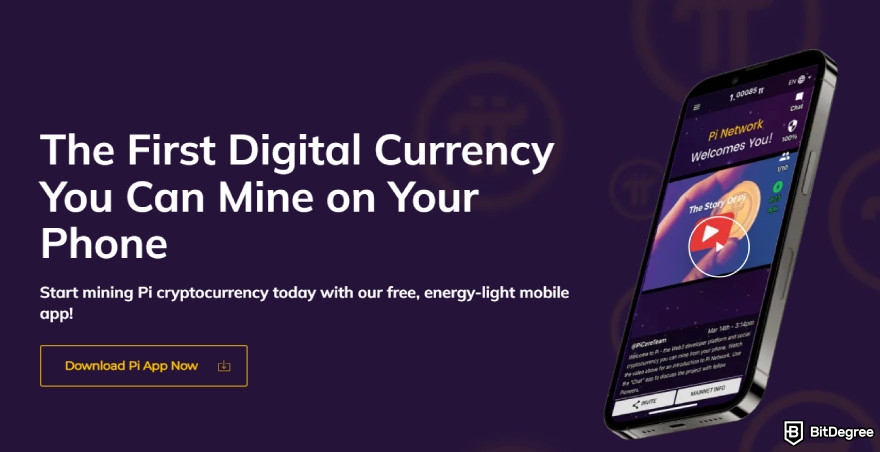
The concept is simple: open the app, log in, tap a button, and your "mining" for the day is complete. You earn Pi as a reward, and 24 hours later, you can repeat the process. It’s free, energy-efficient, requires no expensive equipment, and is designed to be so user-friendly that even your grandma could do it.
This innovative approach to simplifying crypto mining has generated significant interest and excitement worldwide. As of writing, Pi Network reportedly claims to have attracted a community of over 60 million active users.
But how exactly does mining on Pi Network work? And is it as groundbreaking as it seems?
📚 Related: Mining Cryptocurrency on Phone: A Detailed Guide
How Does Pi Network Mining Work?
The secret behind Pi Network’s claimed energy-efficient and user-friendly approach lies in its use of a consensus algorithm based on the Stellar Consensus Protocol (SCP).
Unlike traditional Bitcoin mining, which relies on an energy-intensive proof-of-work system, Pi seeks to eliminate the need for excessive power by introducing “security circles.” These are trust-based quorums where nodes validate transactions based on the trustworthiness of their peers rather than raw computational power.

Imagine a group of students working on a project. Each student forms a small team, and if enough teammates agree on an idea, it becomes part of the final project. Even if some students disagree or don’t participate, the overlapping trusted groups ensure the class reaches a consistent decision.
Similarly, Pi Network’s security circles operate as overlapping networks of trusted peers. When enough trusted nodes within these circles reach consensus, the transaction is validated and added to the blockchain.
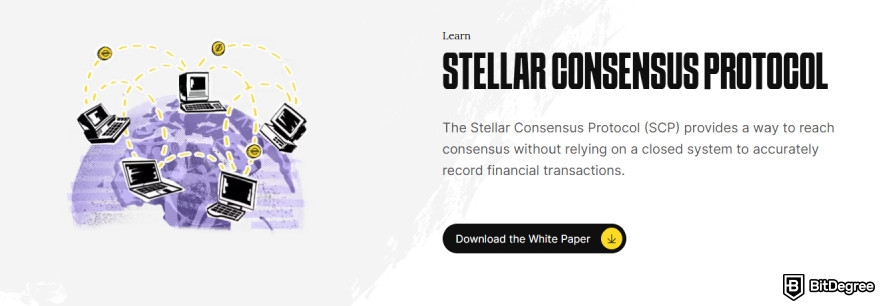
By leveraging this SCP-inspired mechanism, Pi reduces the need for resource-intensive computing while maintaining the integrity and security of the network.[2] This enables an accessible mining protocol that anyone can participate in, requiring nothing more than tapping a button daily on their phone.
In this system, Pi Network categorizes its community members into four main roles:
- Pioneer. Most people fall into this role. These are everyday users who "mine" Pi coins by logging into the app daily, tapping a button to confirm they’re not robots, and validating their presence.
- Contributor. These users play a larger role by creating a trusted list of people they know. This trusted network helps build Pi’s global trust graph, enhancing the system's overall security.
- Ambassador. Those who invite friends and family to join Pi take on the role of Ambassador. By expanding the network and introducing new users, they help grow Pi’s reach and user base.
- Node. For the more tech-savvy, running Pi’s node software on a computer earns you the role of node. They're essential to the ecosystem, leveraging the SCP algorithm and trust graph data to validate transactions and ensure the blockchain operates smoothly.
It’s worth noting that Pi Network allows members to take on multiple roles simultaneously. As long as they contribute daily, participants are rewarded with Pi based on their engagement and activity.
What Is Pi Coin?
As hinted at in the "What Is Pi Network" section, Pi coin acts as the native currency of the Pi decentralized ecosystem. To gain a clearer understanding about the token, let’s break down its tokenomics, explore its use cases, and uncover additional methods to acquire it besides mining.
Tokenomics
Pi Network's tokenomics aims to create an inclusive and sustainable cryptocurrency ecosystem that rewards continuous contributions and engagement. It uses a social network-based mining mechanism where the mining rate decreases as the community grows. This gradual reduction is intended to create scarcity over time, helping maintain the token's value.
.jpg)
As of January 2025, the mining rate has halved five times, matching milestones in the network’s growth. It started at 3.14 Pi/hour and dropped as more users joined:
- Before 1,000 pioneers, the mining rate was 3.14 Pi/hour;
- At 1,000 pioneers, the mining rate dropped to 1.57 Pi/hour;
- At 10,000 pioneers, the mining rate decreased further to 0.78 Pi/hour;
- At 100,000 pioneers, the mining rate was reduced to 0.39 Pi/hour;
- At 1,000,000 pioneers, the mining rate dropped again to 0.19 Pi/hour;
- At 10,000,000 pioneers, the mining rate reached 0.10 Pi/hour.
This rate will continue to decline as more people join, eventually reaching zero when Pi’s total supply is capped at 100 billion Pi.
Now, to ensure fairness and support long-term network development, the total supply is split into an 80/20 ratio between the community and the development team. Of the total 100 billion Pi, 80 billion Pi is reserved for the community, further divided into the following areas:
Community Allocation | Pi Coins Distribution |
|---|---|
Pre-Mainnet Mining Rewards | Around 20 billion |
Mainnet Mining Rewards | Around 45 billion |
Community Initiatives | 10 billion Pi |
Liquidity Pools | 5 billion Pi |
Table: Pi Network’s community allocation
The remaining 20 billion Pi is allocated to the Core Team. This portion is unlocked gradually, keeping pace with community mining progress to ensure that the team’s rewards align with the network’s growth. Additionally, the team may implement lockup conditions on their allocation to maintain long-term stability and provide incentives.
It’s worth noting that this tokenomics model is based on the enclosed mainnet ecosystem. Once the network transitions to the open mainnet, there may be updates to support ecosystem growth.
Potential changes could include controlled inflation, measures to replace lost Pi, or adjustments to maintain liquidity. These decisions will be guided collaboratively by the Pi Foundation and the community to ensure a decentralized and sustainable platform.
Earning Pi
While the primary way to earn Pi coins is through mining on your phone, there are additional methods within the network to acquire or increase the amount of tokens you can collect. Below is a list of viable options:
- Joining the Network. By signing up for the Pi Network mobile app using an invitation code from an existing member, you’ll receive an initial bonus in Pi.
- Building a Security Circle. After three consecutive days of mining, you can increase your mining rate by creating a security circle. This involves adding trusted people to your circle, which helps strengthen the network’s security and increase your earning potential.
- Referral Bonus. By inviting others to join Pi Network using your referral code, you can earn an additional 25% bonus on your base mining rate for each active participant. There’s no limit to the number of people you can refer.
- Locking Up Tokens. Pi Network plans to offer users the option to lock up their tokens voluntarily. Doing so may grant higher mining rates, giving participants a potential way to increase their holdings.
- Running a Node. For users with a computer and stable internet connection, running a Pi Node provides an additional way to earn. Rewards are calculated based on how reliable and accessible your node is to the network.
These options give you several ways to earn and increase your Pi earnings within the network. That said, with so many questions still surrounding the project, I’d recommend approaching it cautiously. It’s always better to stay on the safe side and not overcommit to something that hasn’t been fully proven yet.
📚 Related: How to Play and Earn on the Go
Use Case
Earning the tokens is one thing, but the bigger question remains—what is Pi coin actually meant for?

While the project is still evolving, Pi Network claims its tokens will eventually serve multiple purposes within its decentralized ecosystem. Here’s an overview of the potential use cases:
- Peer-to-Peer Transactions. Pi coins are envisioned to facilitate direct transfers between individuals, offering a decentralized and low-cost alternative to traditional banking. This would allow users to exchange value seamlessly without intermediaries.
- Use in dApps. Pi coins could power decentralized applications, such as gaming platforms, where players earn, trade, and utilize virtual assets securely. Additionally, they could support DeFi projects, enabling activities like lending, borrowing, and yield farming without reliance on financial institutions.
- Network Security. Post-launch, Pi Network may implement a staking mechanism where users lock up their Pi coins to validate transactions and secure the blockchain. In return, holders could earn additional tokens as rewards, attracting long-term participants and fostering a committed user base.
- Integration with Financial Systems. Pi coins could potentially be integrated into payment gateways, enabling instant conversion to fiat currency or linking to crypto debit cards for everyday transactions.
That said, it’s important to remember that Pi coins are currently confined to their enclosed mainnet ecosystem, which limits their utility. The full potential of these use cases remains speculative until Pi Network transitions to the open mainnet and demonstrates its value in the broader market.
Is Pi Network Legit? Uncertainty and Concerns
By now, you should have a pretty good understanding of what is Pi Network, how the protocol works, what Pi coin is used for, and everything in between. So, let’s address why there’s so much uncertainty surrounding this seemingly “revolutionary” project that has attracted over 60 million users globally.
That said, answering whether Pi Network is legit or not is a bit tricky. On one hand, its large user base suggests future potential, and it’s led by a team that includes two Stanford PhDs.
On the other hand, various concerns have cast doubt on its credibility, including prolonged delays, allegations of pyramid-like structures, and issues surrounding data privacy.
Concern 1: Prolonged Enclosed Mainnet Delay
If we’re talking about what is Pi Network’s main concern, one of the biggest issues has to be the long delay of its mainnet launch. Despite years of development, the network is still stuck in its enclosed phase.

While the blockchain is technically operational, it’s still restricted by a firewall that isolates it from the broader cryptocurrency market. You can send Pi coins to fellow pioneers within the ecosystem, but you can’t use them on public exchanges like Bybit or Binance. So, converting Pi to other cryptocurrencies or fiat currencies is still off the table.
📚 Read More: How to Buy & Sell Pi Coin in 2025
Now, to be fair, the team argues that this phase is necessary to test the blockchain’s infrastructure, ensuring it’s reliable, scalable, and secure before opening it up to the larger market. That sounds reasonable—except it’s been six years since Pi Network’s debut in 2019. In digital timelines, that’s practically prehistoric.
To put it into perspective, major blockchain projects like Ethereum and Cardano launched their mainnets within two years. Even Polkadot and Cosmos, which took longer at four and five years, had relatively complex architectures that justified their delays.
Project | Development Duration |
|---|---|
Pi Network | 6 years |
Cosmos | 5 years |
Polkadot | 4 years |
Solana | 3 years |
Cardano | 2 years |
Ethereum | 2 years |
Table: Mainnet development comparison
Pi Network, on the other hand, doesn’t have the same justification. Its concept is relatively straightforward, and it’s technically an adaptation of Stellar, meaning it inherits much of its blockchain architecture.
Yes, the team has announced that they plan to launch the open mainnet by the first quarter of 2025 once they reach their goal of 10 million migrations. But after so many delays, skepticism is hard to ignore.
Many are wondering whether the launch will actually happen or if yet another postponement is on the horizon—and whether these six years of waiting will ever truly pay off.
📚 Further Reading: Pi Network Price Predictions

Did you know?
Subscribe - We publish new crypto explainer videos every week!
NEAR Protocol Explained: Beginner's Guide to NEAR (Animated)


Concern 2: Pyramid Scheme Allegations
As mentioned earlier, Pi Network’s referral system lets you invite others to join using your code, and every time someone signs up, you earn a mining bonus. Plus, there’s no limit to how many people you can refer, meaning the more people you bring in, the more Pi you can accumulate.

But that’s not all. The network’s security model leans heavily on something called a global trust graph—or, simply put, a giant web of trusted connections. This network is built by aggregating millions of "security circles," each created by users adding people they trust. Every valid connection in your circle boosts your mining rate, which naturally incentivizes recruiting.
This referral-based growth system has faced multiple criticism for its similarities to a pyramid scheme. The rewards are tied more to bringing in new users than providing the tokens with immediate value or utility. Critics argue it feels like building a community purely for numbers, offering quick rewards in digital assets that still lack a clear, proven use case.

And then there’s the concern about who benefits the most. It’s easy to see how early adopters and people with massive referral networks could end up with a disproportionate share of the rewards. That kind of centralization doesn’t exactly scream "decentralized," does it?
The team behind Pi Network argues that this approach is necessary to build a secure and vibrant ecosystem. But whether this strategy is really enhancing the platform—or just adding fuel to the skepticism—is something only time will tell.
Concern 3: Data Privacy Issues
Pi Network asks its users to go through a fairly strict KYC process. This involves providing sensitive personal information, such as a government-issued identification document like a passport, driver’s license, or national ID. Additionally, users are required to complete a liveness check by taking a real-time selfie to confirm their identity.
The team argues that these steps are necessary to ensure compliance with regulations and to confirm that all pioneers are genuine individuals. The goal is to prevent users from creating multiple accounts and hoarding Pi unfairly.

While this might seem reasonable on the surface, the process has raised a few eyebrows—especially after the network announced that users themselves could act as validators to speed up the KYC process before the grace period deadlines.
Here’s where it gets tricky. Allowing random individuals to validate sensitive information, even if document details are said to be automatically redacted, has left many users feeling uneasy. There’s always the risk of system failures, which could result in personal data being accidentally exposed.
And let’s face it—no one wants to deal with the fallout of mishandled personal information. From identity theft to data being sold for advertising purposes or even used in malicious schemes, the potential risks are too significant to ignore.

Adding to the pressure is the fact that this KYC process isn’t optional. If you fail to complete both the verification and token migration within the set timelines, you risk losing your Pi entirely. That’s a lot to ask, especially when doubts remain about how securely this data is stored and managed.
With reports indicating that over 9 million users have already completed the migration process, it’s no surprise that concerns are mounting. Without clear transparency on how this data is handled, it’s hard not to wonder—how safe is all this information, and can users really trust that it won’t be misused?
Pi Coin Alternatives
With all the concerns surrounding the project, I can’t blame you for worrying about whether Pi coin is a legit asset. Thankfully, the crypto space is vast, and there are plenty of other projects that might catch your interest.
Now, I’ll admit that these alternatives don’t replicate Pi’s main gimmick of super-accessible and low-cost mobile mining. Still, they’re interesting options if you want to explore other opportunities now that you know what Pi Network is.
And the best part? These projects are already well-established, backed by years of market experience, and readily accessible on major exchanges such as Kraken or Bybit.

|

|
|
|---|---|---|
| Beginners | More Advanced Users | |
| United States, Germany, United Kingdom, France, Canada, + 190 more | South Korea, United Kingdom, Ukraine, Turkey, +160 more | |
| All Kraken Coupons | See All Coupons of Best Exchanges | |
| One of the best crypto exchanges, especially in the US. | A popular crypto derivatives exchange with some super-low trading fees. | |
|
Visit site
Read review |
See TOP10 Brands
Read review |
Table: Kraken VS Bybit comparison
Stellar
If you’re looking for a project that shares some similarities with Pi, Stellar is a good place to start. In fact, it's the foundation on which Pi Network’s consensus algorithm was developed.
Stellar’s blockchain utilizes the Stellar Consensus Protocol, which is known for being fast, efficient, and ideal for low-cost transactions. Its primary focus is enabling seamless, cross-border transfers between any currencies—whether digital or fiat.
The network’s native token, Lumen (XLM), plays a central role in Stellar’s operations. When the project was launched, 100 billion XLM were created as part of its protocol design. These tokens have a unique function within the network.
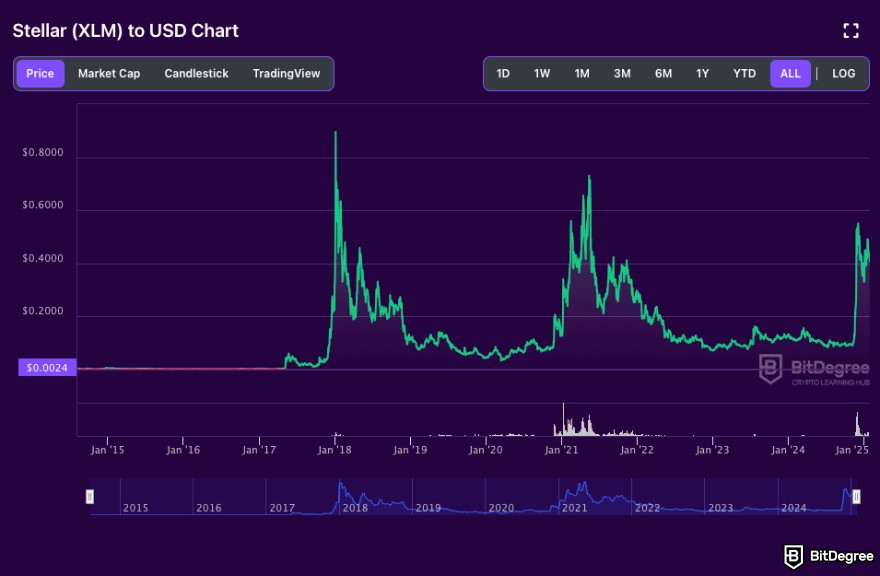
For instance, interacting with Stellar’s blockchain—whether to store or transfer funds—requires holding some Lumens. Each account must allocate a small amount of XLM to support its managed assets or any open offers it maintains within the network.
On top of that, the native currency helps to maintain the network’s efficiency and security. Every account must hold a minimum of 1 XLM, which helps prevent accounts from being left unused and ensures that each has some sort of practical value.
Bitcoin
I know what you’re thinking—how does Bitcoin compare to Pi? The two don’t share many similarities, especially since Bitcoin’s mining process is far more expensive and complex than Pi’s mobile "mining." However, if you’re exploring projects tied to cryptocurrency mining, why not start with the most established and time-tested option?
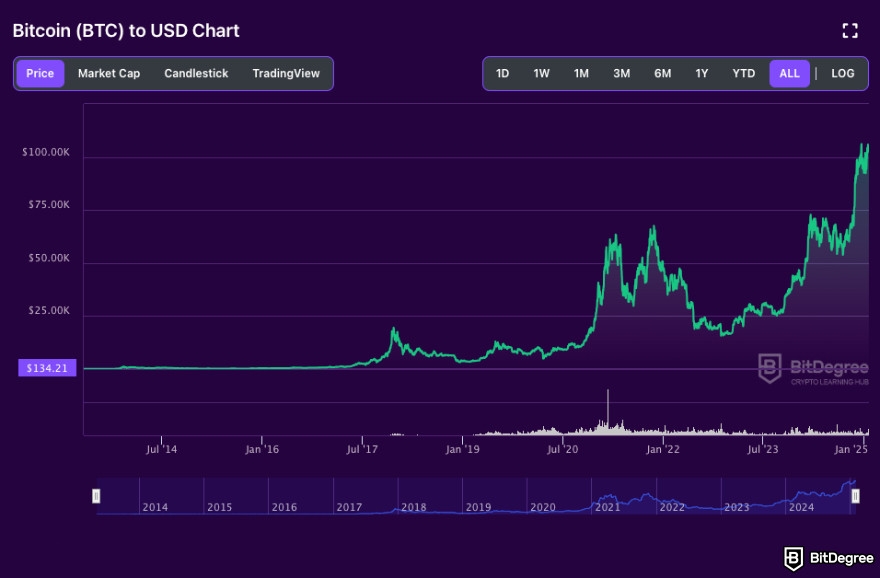
Bitcoin has firmly established itself as a reliable store of value and a cornerstone of the digital currency revolution. It’s accessible to everyone, with no central ownership or control, and its open-source code ensures transparency. Plus, it’s easy to acquire through top-tier exchanges.

- Secure and reliable
- Accepts fiat currencies
- Lots of trading options
- Reputable exchange
- Accepts fiat currencies
- Offers various trading options

- Fiat currencies - accepted
- Simple to use
- Accepts only the most trustworthy cryptocurrencies
- A leading cryptocurrency exchange platform
- Best for beginner investors
- Accepts fiat currencies

- Fully reserved and transparent
- Multiple tradable asset classes
- Over 300 supported cryptos
- Over 300 cryptocurrencies
- Secure & transparent
- Fully reserved
Monero
Another project you might find interesting as an alternative to Pi is Monero. It’s a decentralized privacy coin designed specifically for anonymous transactions, putting user confidentiality front and center.
One of the things I find interesting about the token is its CPU-friendly mining process. You don’t need expensive mining rigs to get started. Regular devices like laptops or desktops work well, making the process more accessible to broader users.
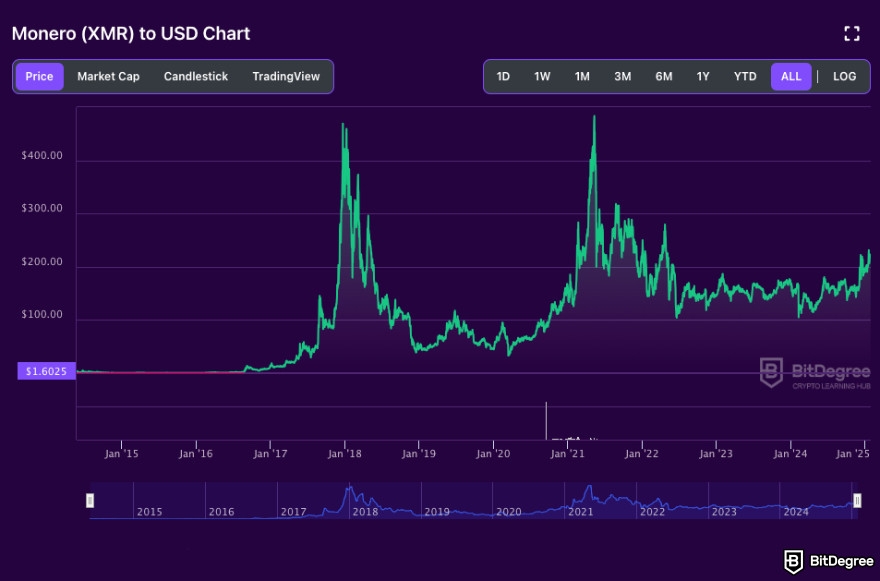
Now, while mobile mining isn’t practical due to inefficiency, Monero is still a beginner-friendly token. Its GUI wallet is intuitive and user-friendly, so even if you’re new to the crypto space, setting up mining or interacting with the network should feel relatively manageable.
That said, Monero does differ from Pi in a key way—it has an unlimited coin supply. On the plus side, this ensures a steady influx of tokens. However, the lack of scarcity means it doesn’t rely on limited availability to boost value over time.
Conclusions
When discussing what Pi Network is, we can’t ignore the fact that the project has generated a lot of hype with its mobile mining concept and its promise to make crypto accessible. That said, there are plenty of red flags, including the prolonged enclosed mainnet, the referral-based growth model, and concerns about potential data privacy issues.
If all that feels like too much to overlook, you’re not out of options. Established projects like Stellar, Monero, and even the good old Bitcoin are worth exploring. While they don’t have Pi’s unique gimmick, they offer proven use cases and are available on major exchanges like Kraken and Bybit—something Pi has yet to deliver.
At the end of the day, whether you choose to stick with Pi or explore those alternatives, the most important thing is to stay informed. The crypto space is unpredictable, offering opportunities but also significant risks. So, do your research, set realistic expectations, and make decisions that align with your goals and comfort level.
The content published on this website is not aimed to give any kind of financial, investment, trading, or any other form of advice. BitDegree.org does not endorse or suggest you to buy, sell or hold any kind of cryptocurrency. Before making financial investment decisions, do consult your financial advisor.
Scientific References
1. Yüksel S., Dinçer H., Çağlayan Ç., et al.: 'Bitcoin mining with nuclear energy';
2. Vassantlal R., Heydari H., Bessani A.: 'On the minimal knowledge required for solving Stellar Consensus'.

